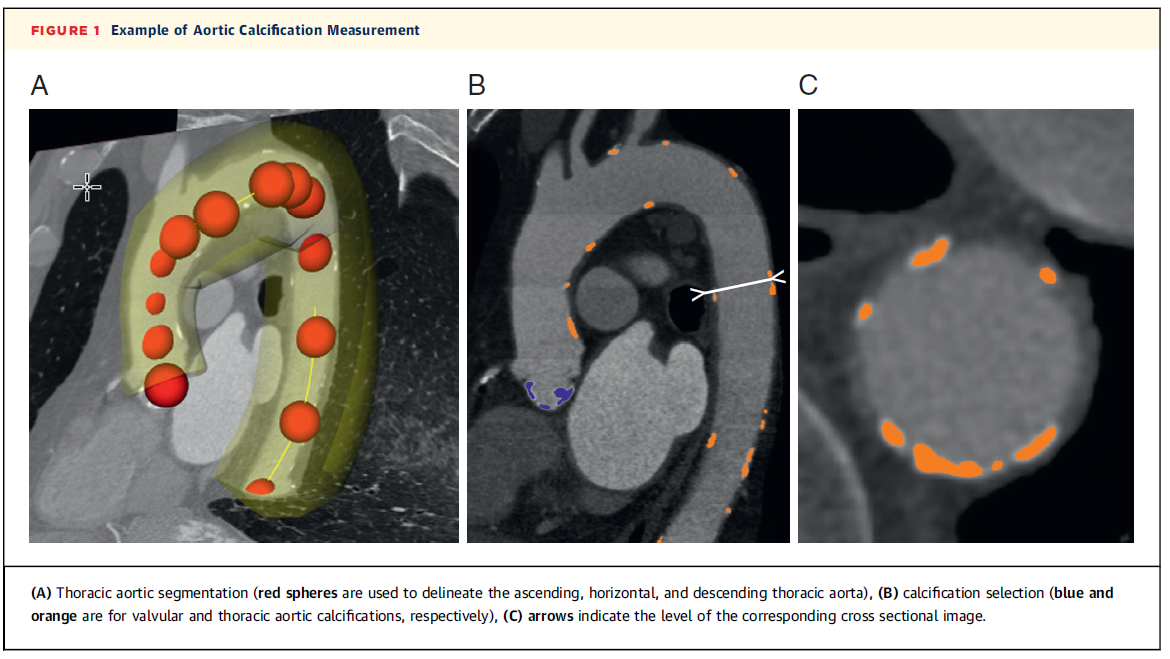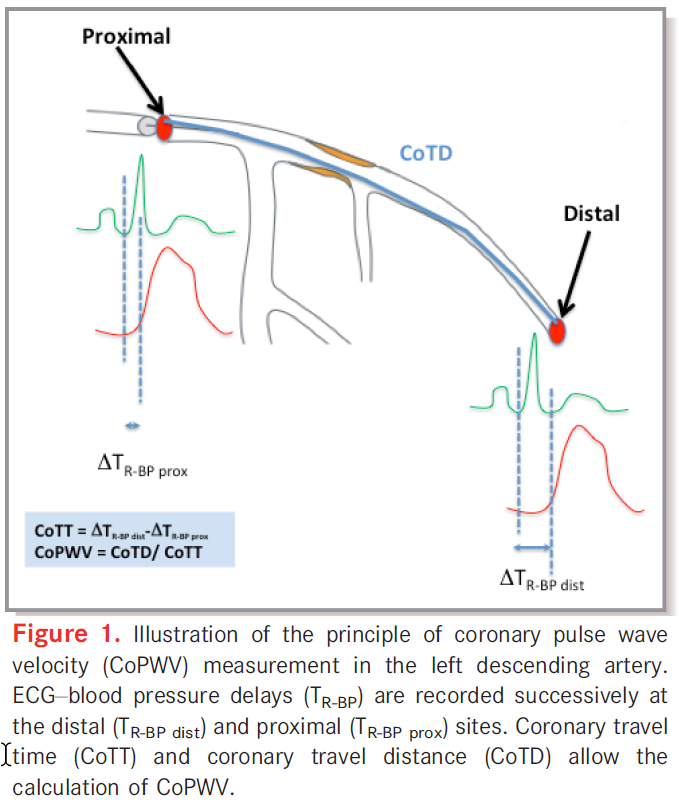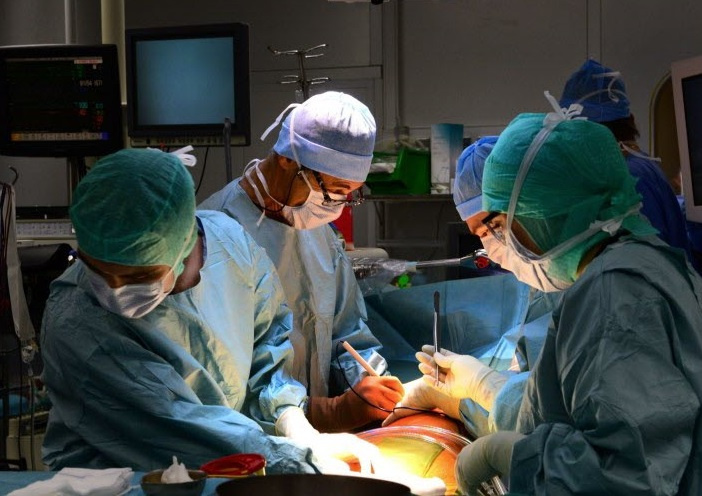While aortic stiffness is a well-established prognostic marker in several populations including general population or hypertensive patients, it is often overlooked in cardiology. Indeed, the clinician or the interventional cardiologist usually focuses on the structural disease of the heart, namely valve dysfunction or coronary stenosis neglecting that the stiffness of the vessels may also play a role in the course of the disease. Our group has been precursor in the introduction of vascular stiffness in the field of interventional cardiology with two applications.
The first one relies to the cure of aortic stenosis (AS) by transcatheter aortic valve implantation (TAVI). We have shown that aortic stiffness, estimated by thoracic aortic calcification load (TAC), assessed from a CT-scan by a software developed by CREATIS, was a major contributor of outcomes after AS relief probably because it represents the residual left ventricular after-load. After the seminal publication in 2015, this prognostic value has been extensively demonstrated in 2 French multicentric cohorts, and in an American cohort. It has also been confirmed by other teams making this variable an outstanding prognostic marker. This has led to the development of a prognostic score, the CAPRI score, aimed at predicting cardiovascular and all-cause death at 1 year. A prospective research program has been launched for assessing the impact of using this score on the TAVI in France (PRME 2019 campaign: CAPRICORN).

The second application of vessel stiffness relies to coronary stiffness. We are relieving coronary narrowing (“stenosis”) based on eye balling or on hemodynamic indices reflecting pressure drop across the stenosis. The impact of stiffness on the decision to intervene on a stenosis is totally neglected. Yet, it can influence the significance of the pressure drop; more importantly, it can help predicting the risk of plaque complication such as rupture or erosion. Based on a careful pressure signal analysis we have developed methods for measuring coronary pulse wave velocity invasively with patent properties. We have also modeled the relationship between coronary stiffness, pressure indices and flow indices to launch a research program based on the development of new devices usable for the interventional cardiologist.


